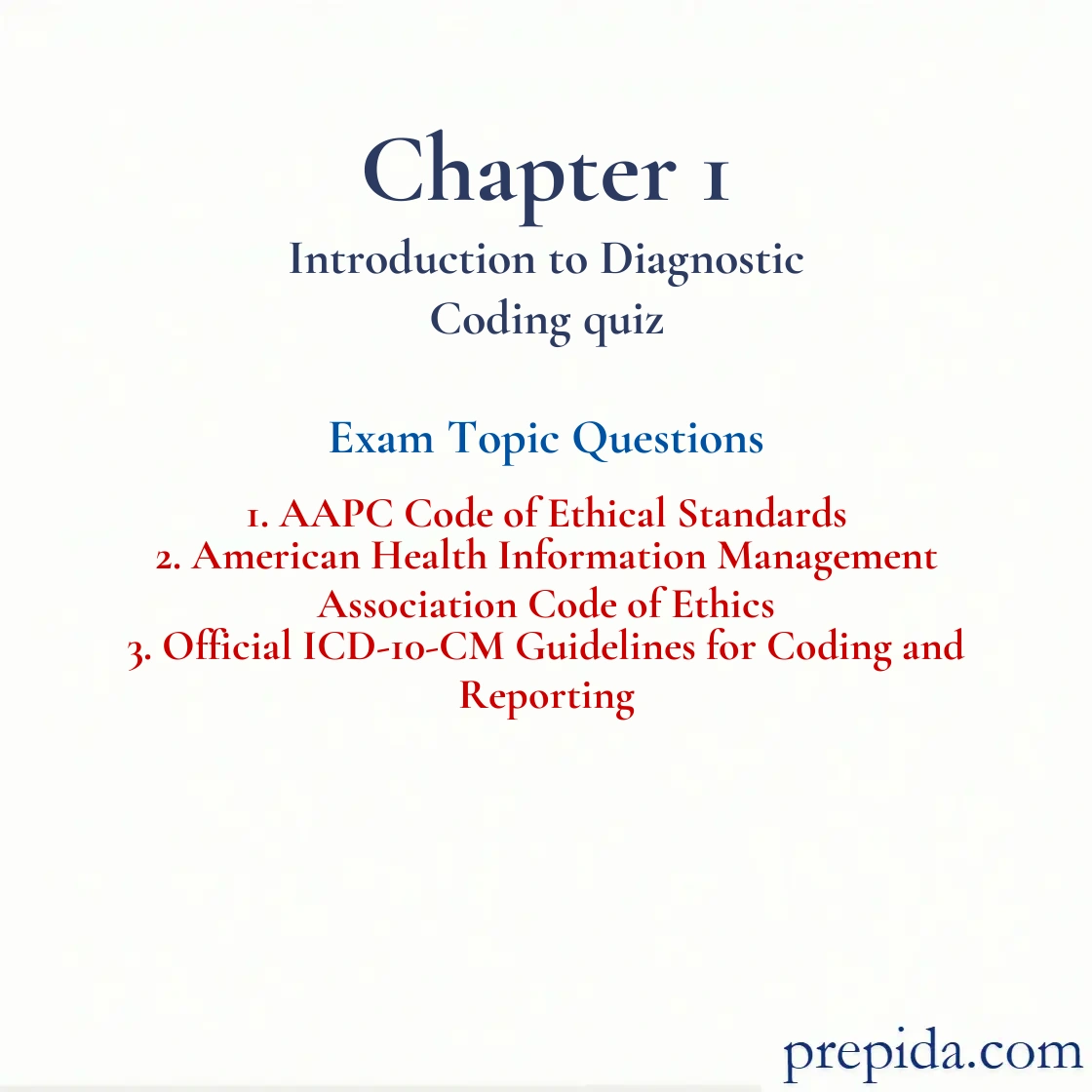
What does AAPC stand for?
- American Academy of Professional Coders
- American Association of Professional Coders
- American Academy of Physician Coders
- American Association of Physician Coders
The AAPC is the American Academy of Professional Coders.
Coding For Coverage: Choosing a code on the basis of what the insurance company will cover (pay for) rather than accurately reflecting the truth.
AHIMA stands for:
- American Health Information Management Association.
- American Healthcare Insurance Monitoring Association.
- American Health and Insurance Marketing Association.
- American Healthcare Information and Medical Association.
The American Health Information Management Association (AHIMA) is the preeminent professional organization for health information workers, including insurance coding specialists.
Which of the following professional organizations has a code of ethics for coders to follow?
- AAPC
- AHIMA
- Both AAPC and AHIMA
- Neither AAPC nor AHIMA
AAPC and AHIMA both have a code of ethics for coders to follow.
Coding For Coverage: Choosing a code on the basis of what the insurance company will cover (pay for) rather than accurately reflecting the truth.
The ________________ is a national organization for professional coding specialists.
- Centers for Medicare and Medicaid Services
- Office of the Inspector General
- Department of Health and Human Services
- American Health Information Management Association
The American Health Information Management Association (AHIMA) is the preeminent professional organization for health information workers, including coding specialists.
Coding For Coverage: Choosing a code on the basis of what the insurance company will cover (pay for) rather than accurately reflecting the truth.
Jane complains of nausea. Dr. Mason orders her to go to the lab for a blood test to rule out pregnancy. You code:
- nausea.
- unspecified.
- pregnancy.
- nausea and pregnancy.
The guidelines in the Official ICD-10-CM Guidelines for Coding and Reporting will guide you toward the best, most accurate code and make coding decisions easier. Section IV, Diagnostic Coding and Reporting Guidelines for Outpatient Services, Subsection H states, “Do not code diagnoses documented as ‘probable’, ‘suspected’, ‘questionable’, ‘rule out’, or ‘working diagnosis.’ Rather, code the condition(s) to the highest degree of certainty for that encounter/visit.”
Symptom: A subjective sensation or departure from the norm as related by the patient.
Outpatient coders cannot assign a diagnosis code for a diagnosis documented as:
- likely.
- possible.
- questionable.
- All of these
An outpatient coder must follow outpatient coding guidelines, which state that a diagnosis documented as probable, suspected, likely, questionable, or possible is not coded.
Diagnosis: A physician’s determination of a patient’s condition, illness, or injury.
The official guidelines for ICD-10-CM are divided into ___ sections.
- 2
- 3
- 4
- 5
The guidelines are divided into four sections and an appendix: Section I—Conventions, General Coding Guidelines, and Chapter-Specific Guidelines; Section II—Selection of Principal Diagnosis; Section III—Reporting Additional Diagnoses; Section IV—Diagnostic Coding and Reporting Guidelines for Outpatient Services; Appendix I—Present on Admission Reporting Guidelines.
ICD-10-CM: The acronym for International Classification of Diseases, Tenth Revision, Clinical Modification.
Where are the Official Guidelines for Coding and Reporting published?
- In Appendix A of the ICD-10-CM manual
- In the front of the ICD-10-CM manual
- In Section III of the ICD-10-CM manual
- In Section IV of the ICD-10-CM manual
In the front of the ICD-10-CM manual, you will find the Official Guidelines for Coding and Reporting as issued by the Centers for Medicare and Medicaid Services (CMS) and the National Center of Health Statistics (NCHS), two departments within the U.S. government's Department of Health and Human Services (HHS).
ICD-10-CM: The acronym for International Classification of Diseases, Tenth Revision, Clinical Modification.
The abbreviation RUQ stands for _____________.
- right lower quadrant
- left upper quadrant
- right upper quadrant
- left lower quadrant
The Four Quadrants: Using the belly button as the center, these areas are referred to as the left upper quadrant (LUQ), left lower quadrant (LLQ), right upper quadrant (RUQ), and right lower quadrant (RLQ). These descriptors may be used to describe the location of an organ or a symptom. For example, the appendix is located in the right lower quadrant. A patient’s complaint of pain in the RLQ may indicate possible appendicitis.
Anatomical Site: A specific location or part of the human body.